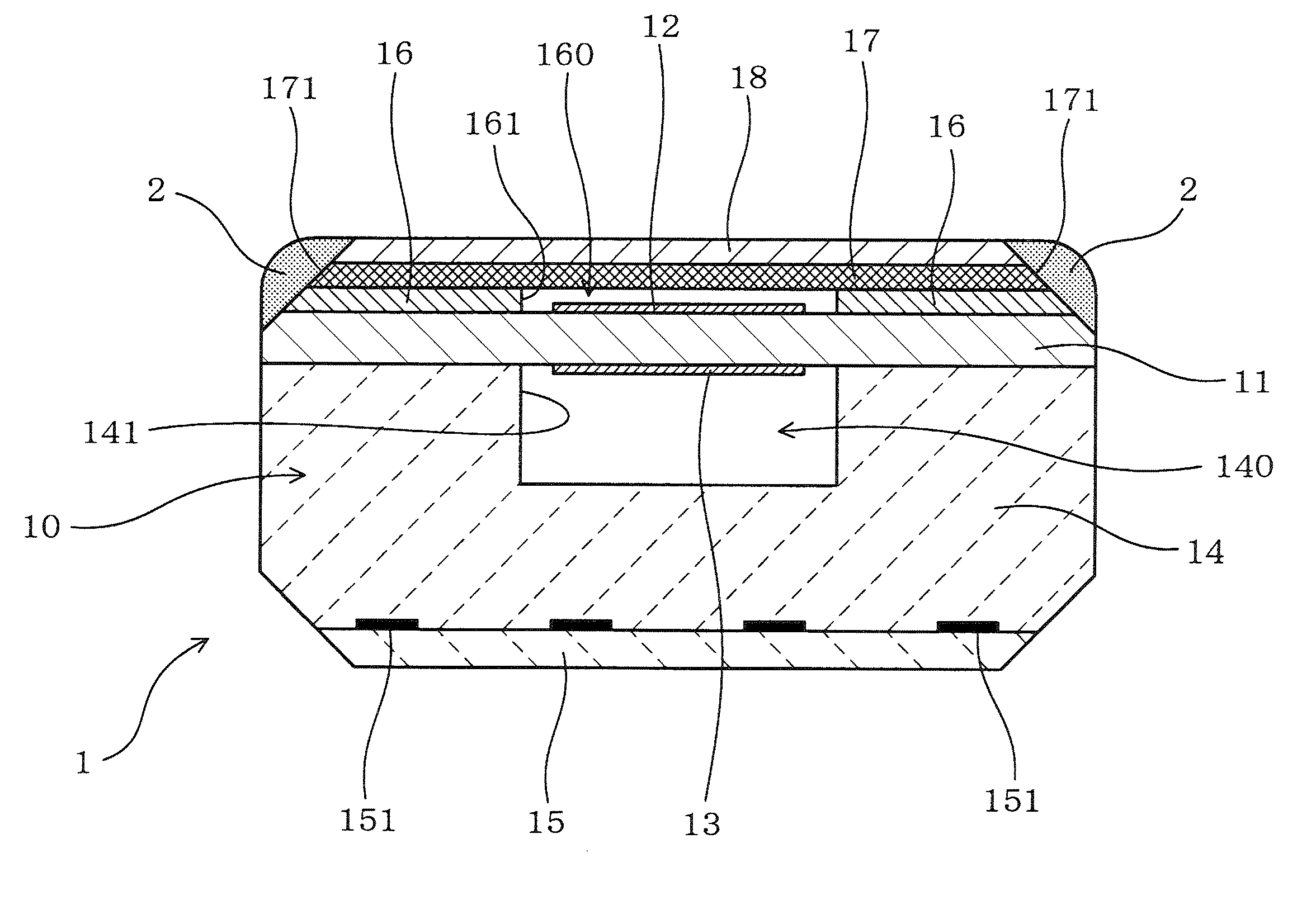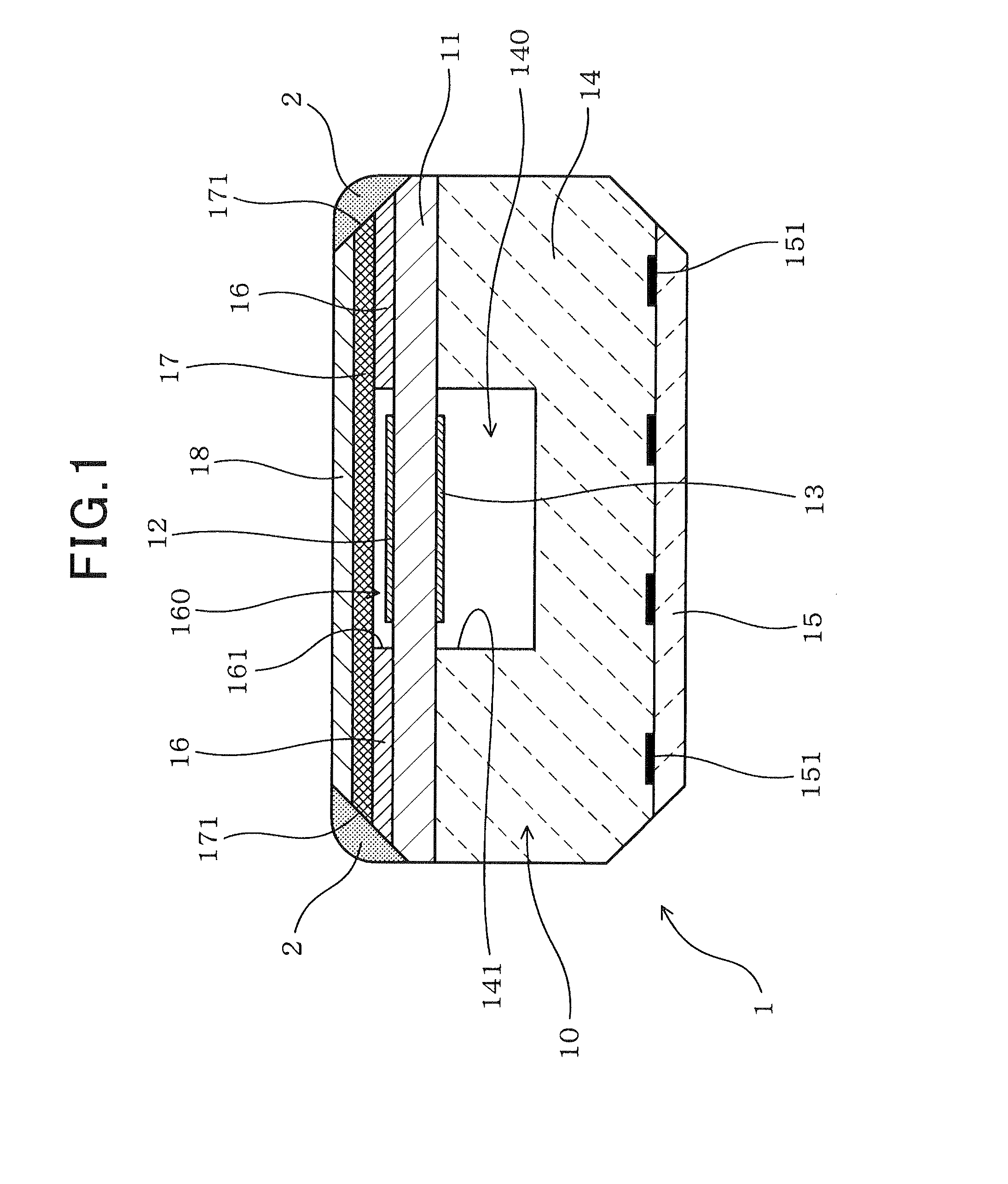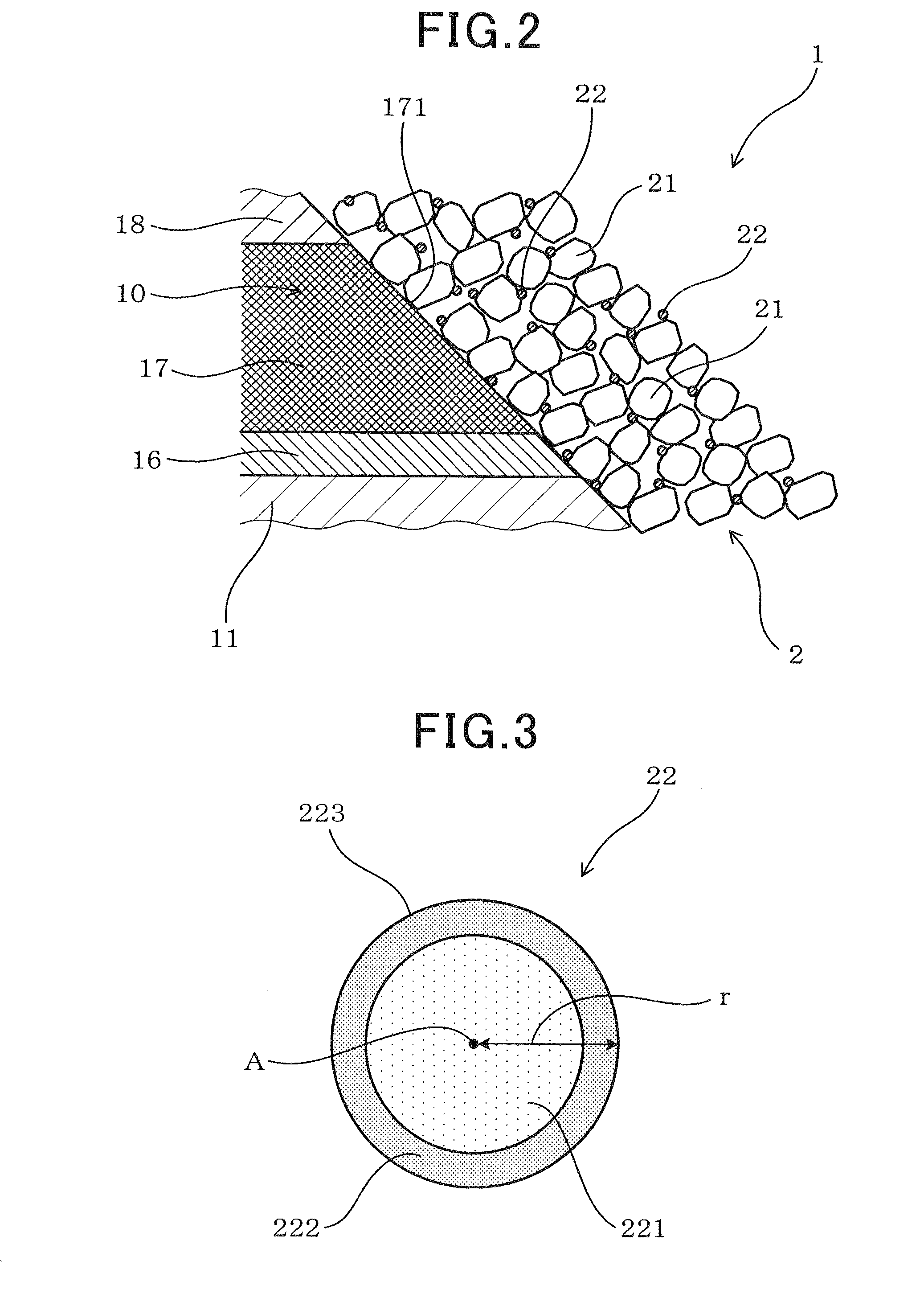Gas sensor element and gas sensor employing the gas sensor element
a technology of gas sensor element and gas sensor element, which is applied in the direction of instruments, measurement devices, scientific instruments, etc., can solve the problems of gas sensor response delay, oxidation and reduction reaction, and significant output deviation of gas sensor element due to hydrogen contained in exhaust gas, etc., and achieves quick response. , high accuracy
- Summary
- Abstract
- Description
- Claims
- Application Information
AI Technical Summary
Benefits of technology
Problems solved by technology
Method used
Image
Examples
first embodiment
[First Embodiment ]
[0042]FIG. 1 shows the overall configuration of a gas sensor element 1 according to a first embodiment.
[0043]As shown in FIG. 1, the gas sensor element 1 includes a solid electrolyte body 11, a measurement electrode 12, a reference electrode 13, and a porous diffusion-resistant layer 17. The solid electrolyte body 11 has oxygen ion conductivity and an opposite pair of first and second surfaces (i.e., the upper and lower surfaces in FIG. 1). The measurement electrode 12 is provided on the first surface of the solid electrolyte body 11 so as to be exposed to a measurement gas. The reference electrode 13 is provided on the second surface of the solid electrolyte body 11 so as to be exposed to a reference gas. The porous diffusion-resistant layer 17 is provided on the same side of the solid electrolyte body 11 as the measurement electrode 12, so that the measurement gas is introduced to the measurement electrode 12 through the diffusion-resistant layer 17. In addition...
third embodiment
[Third Embodiment ]
[0124]This embodiment illustrates a gas sensor element 1 which has a similar configuration to the gas sensor element 1 according to the first embodiment; accordingly, only the differences therebetween will be described hereinafter.
[0125]As shown in FIG. 7, in the present embodiment, the main body 10 of the gas sensor element 1 includes the solid electrolyte body 11, the measurement electrode 12, the reference electrode 13, the heater substrate 15 and the diffusion-resistant layer 17 as in the first embodiment. However, the reference gas chamber formation layer 14, the insulating layer 16 and the shield layer 18 are omitted from the main body 10. Instead, the main body 10 further includes an insulating layer 191, a pump cell 4, a porous diffusion-resistant layer 44 and an insulating layer 192.
[0126]More specifically, in the present embodiment, the diffusion-resistant layer 17 is laminated directly on the first surface (i.e., the upper surface in FIG. 7) of the soli...
PUM
| Property | Measurement | Unit |
|---|---|---|
| specific gravity | aaaaa | aaaaa |
| porosity | aaaaa | aaaaa |
| oxygen ion conductivity | aaaaa | aaaaa |
Abstract
Description
Claims
Application Information
 Login to View More
Login to View More - R&D
- Intellectual Property
- Life Sciences
- Materials
- Tech Scout
- Unparalleled Data Quality
- Higher Quality Content
- 60% Fewer Hallucinations
Browse by: Latest US Patents, China's latest patents, Technical Efficacy Thesaurus, Application Domain, Technology Topic, Popular Technical Reports.
© 2025 PatSnap. All rights reserved.Legal|Privacy policy|Modern Slavery Act Transparency Statement|Sitemap|About US| Contact US: help@patsnap.com



